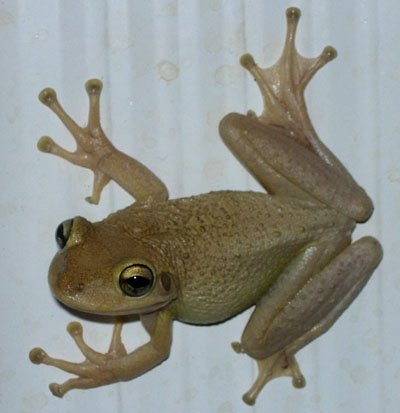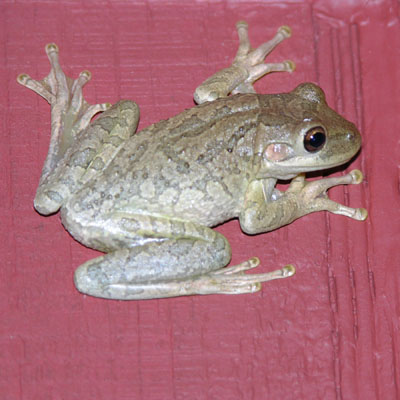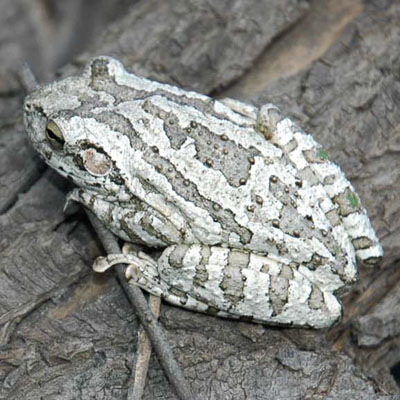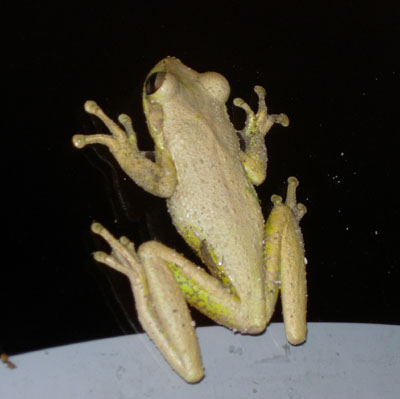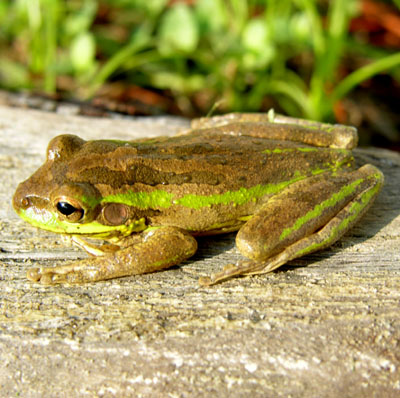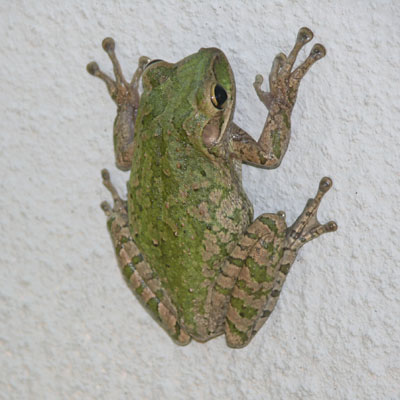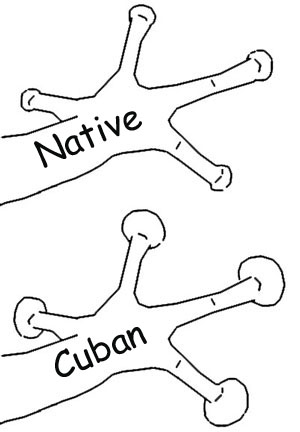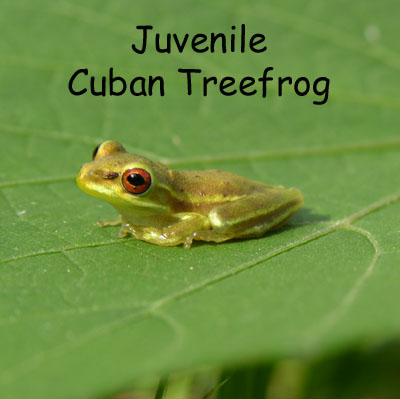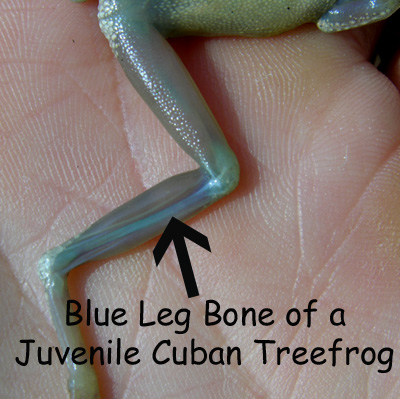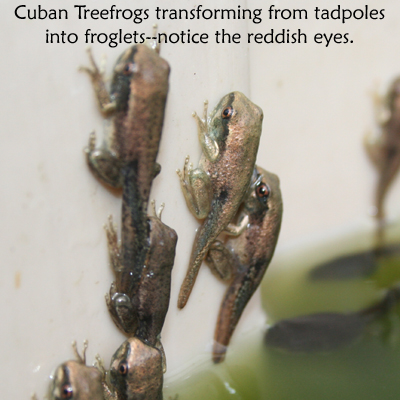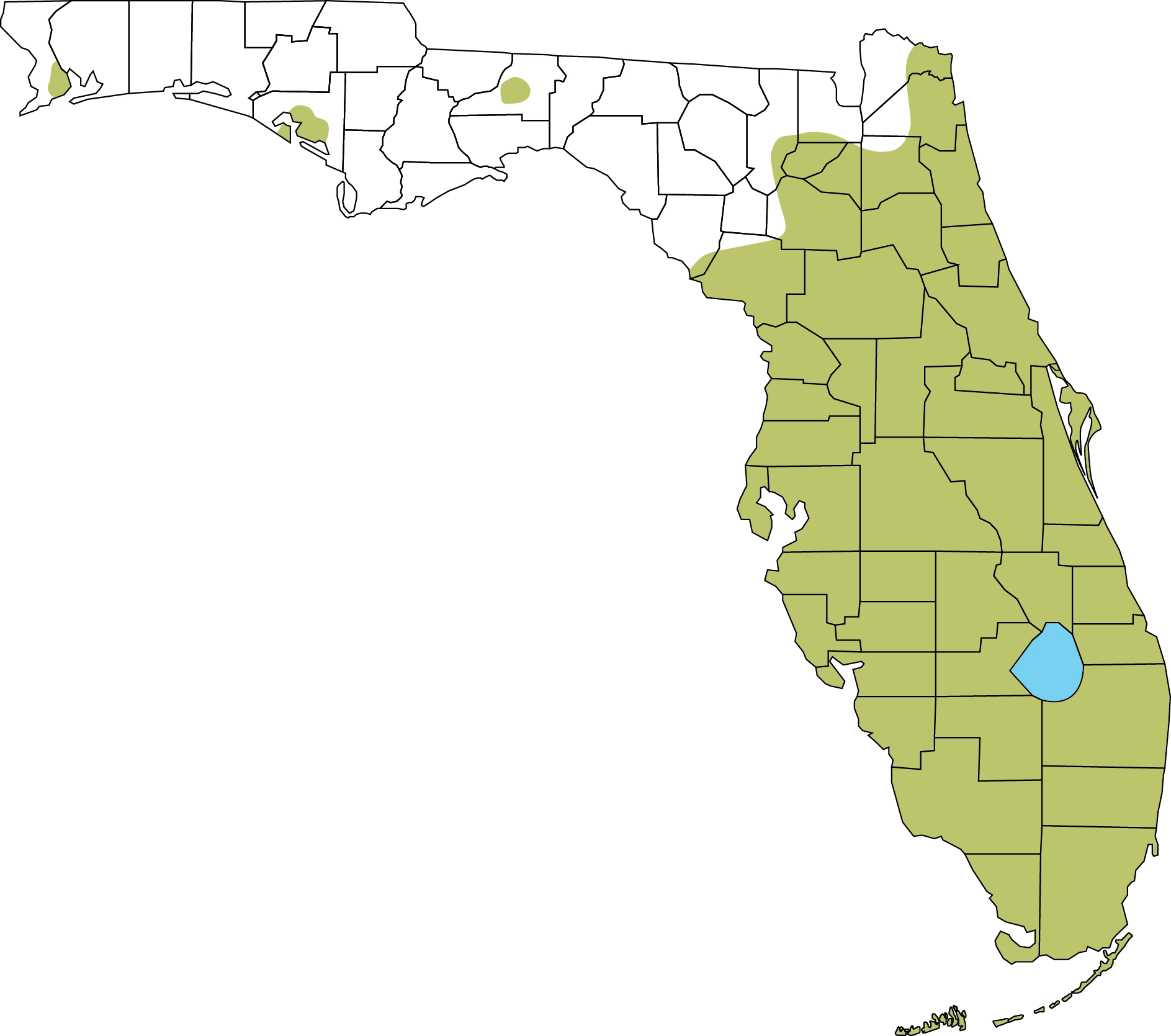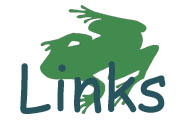Florida's Frogs & Toads
Treefrogs (Family Hylidae)
_________________________________________________________
INVASIVE SPECIES
Cuban Treefrog
(Osteopilus septentrionalis)
Cuban Treefrog (click on small images to view larger)
Photos by Dr. Steve A. Johnson (UF), Ryan C. Means (Coastal Plains Institute), Esther Langan (Smithsonian's National Zoo), and Diana Evans; line drawing by Monica E. McGarrity (UF). Photos may not be used without the express written permission of the photographer. To obtain permission to use these photos for educational purposes, email tadpole@ufl.edu.
Impacts:
Ecological - Cuban Treefrogs prey on native frogs, small lizards, and small snakes; their tadpoles can out-compete native tadpoles for food or space; believed to be causing the decline of native treefrogs.
Human Health / Quality of Life - Cuban Treefrog skin secretes a mucus that can irritate eyes and nose, cause allergy-like symptoms, and even trigger asthma attacks; they breed loudly after midnight in pools, ponds, birdbaths, etc.; they invade toilets and can clog drains; they invade power boxes and cause power outages.
For more info, read "The Cuban Treefrog in Florida" and follow the links to Cuban Treefrog Research and Citizen Science in the left-hand menu on this page.
Size:
Usually 1.5 to 3 in. (max. ~ 5.5 in.) Note: Any treefrog in Florida that is larger than 2.5 inches is definitely NOT native, and is probably a Cuban Treefrog.
Identification:
Body color is highly variable, ranging from whitish to gray, green, or brown, and may be marked with irregular, dark stripes or blotches that fade when the frog changes color. Skin is warty (some warts quite prominent). The armpits and groin may be washed with yellow. Juvenile body color is olive-brown; sides are often marked with light stripes. Juveniles often have reddish eyes, and blue bones that can best be seen through the skin on the underside of the hind legs (show in the lower left inset image above). Like all treefrogs, this species has enlarged, sticky toepads; toepads are quite large in this species, usually much wider than the toepads of native treefrogs.
Breeding:
March to October (perhaps year-round in South Florida); lays eggs in a surface film (100-1,000 eggs at a time). Call is a hoarse mraaaak! To hear frog calls, visit the USGS Frog Call Lookup and select the species you want to hear from the common name drop-down list.
Diet:
Beetles, roaches, spiders, other small invertebrates; also small frogs, lizards, and snakes
Habitats:
Native to Cuba, the Cayman Islands, and the Bahamas. Introduced throughout the Caribbean, in Hawaii, and in Florida. Possible isolated population in southeastern Texas.
Found throughout peninsular Florida, the Keys, and isolated areas of the panhandle, on buildings and in trees in urbanized and natural areas near breeding sites. Breeds in any shallow, fish-free water, including bottomland and floodplain forests and swamps, cypress domes, marshes, wet flatwoods, manmade ponds, ditches, birdbaths, buckets, and swimming pools. Often moves to breeding sites in large numbers after early-season rains.
NOTE: Cuban Treefrogs have established breeding populations throughout the Florida peninsula and in several places in the panhandle (shaded in green). There are numerous, isolated records of this invasive frog from the unshaded areas in the panhandle. Please report any suspected observations of the species in these areas to Dr. Steve A. Johnson at tadpole@ufl.edu. There is no need to report Cuban Treefrogs seen in the peninsula.
Map by Tracy Bryant and Steve A. Johnson, UF/IFAS - may be used freely for education.
Go Back to Florida's Frogs - All Regions
